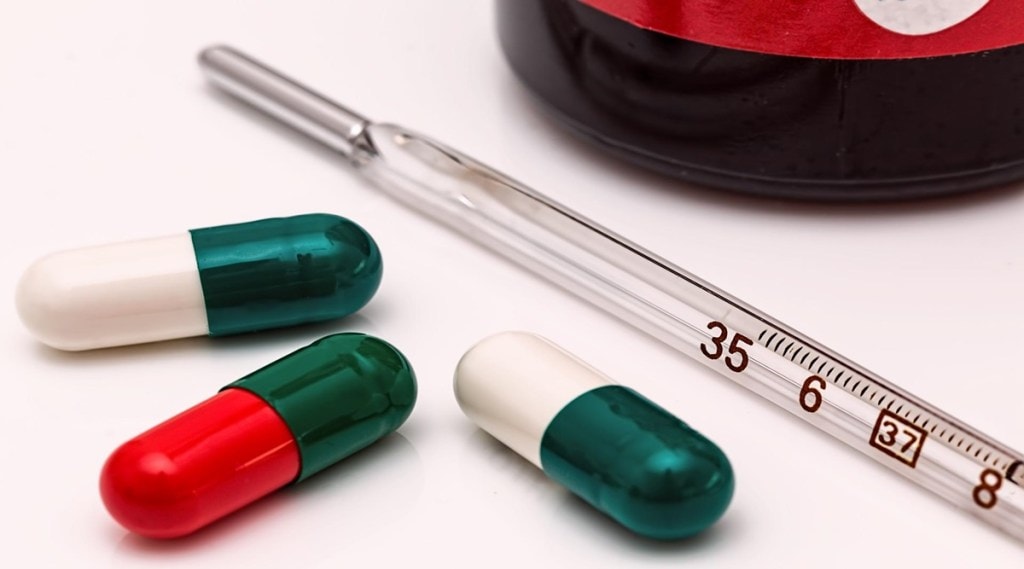By Dr Avinash Phadke
The ICMR’s 2021 report delineates a nuanced picture of AMR in India, characterized by both progress and setbacks. The AMR trends present a mixed scenario with encouraging signs, such as improved susceptibility of Pseudomonas aeruginosa to aminoglycosides and fluoroquinolones, indicating progress in combatting resistance. The unwavering in vitro activity of Vancomycin and Daptomycin against Methicillin-resistant Staphylococcus aureus (MRSA) underscores their continued efficacy. However, worrying declines in imipenem susceptibility in Escherichia coli and Klebsiella pneumoniae raise concerns about the efficacy of this critical antibiotic. The persistent high resistance of Acinetobacter baumannii to carbapenems and the rising prevalence of Vancomycin-resistant Enterococcus faecium indicate growing challenges. Diminishing fluconazole susceptibility in Candida Auris cases further highlights the dynamic nature of AMR.
The ramifications of unchecked AMR are substantial, threatening to undo decades of progress in infectious disease management. The CDDEP’s alarming statistics, coupled with WHO’s projections of AMR-related mortality, underscore the urgency of the crisis.
Veterinary and Environmental Contributions to AMR
The role of veterinary practices in the AMR equation is significant. Excessive and unregulated antibiotic use in livestock and poultry, as highlighted by INFA, contributes to a reservoir of resistance that can easily transfer to humans. The environmental impact, with pharmaceutical effluents contaminating waterways, has turned rivers and lakes into breeding grounds for resistant strains, necessitating a revision of waste management policies.
AMR Drivers: Dissecting the Complexity
The proliferation of AMR in India is fueled by a complex interplay of factors, with human behaviour, environmental policies, and agricultural practices all contributing to the problem. Human factors play a significant role, with overprescription and misuse of antibiotics contributing to the development of resistance. Gaps in patient education on antibiotic stewardship further exacerbate the issue, emphasizing the need for comprehensive awareness programs. Environmental factors contribute to AMR through effluent discharge, creating environmental reservoirs of resistance. Additionally, insufficient treatment of pharmaceutical waste adds to the environmental burden. In animal husbandry, the overreliance on antibiotics for disease prevention in animals is a concerning driver of resistance. Weak enforcement and monitoring of antibiotic use in agriculture further compound the problem, highlighting the importance of robust regulatory measures to mitigate the impact of AMR across different domains. Addressing these drivers requires a holistic and coordinated approach involving healthcare professionals, environmental authorities, and stakeholders in animal husbandry.
Urban vs. Rural Dynamics and Healthcare Contributions
The disparity in AMR prevalence between urban and rural settings highlights the need for targeted interventions. Urban healthcare systems, with their higher antibiotic use and patient density, act as accelerators for the spread of resistance. Rural healthcare systems, although less saturated with antibiotics, face challenges of accessibility and inadequate infrastructure that contribute to poor disease management and subsequent resistance.
The private sector, with its significant role in healthcare delivery, must navigate the delicate balance between patient demand and responsible prescribing. The public sector’s vast network, pivotal for surveillance, requires strengthening to effectively combat AMR.
AMR in the Time of COVID-19
The onslaught of the COVID-19 pandemic has compounded the AMR crisis. The surge in antibiotic usage, often as a misguided prophylactic against secondary infections, has placed additional strain on the fight against AMR. The relaxation of antimicrobial stewardship protocols during the pandemic emphasizes the need for a return to and reinforcement of these critical practices.
Strategic Framework for AMR Mitigation
A robust response to AMR is contingent upon a strategic framework that encompasses policy reform, surveillance enhancement, and infection prevention. On the policy and regulation front, strict implementation of regulations governing antibiotic sales and use is crucial, emphasizing the need for a coordinated international effort to develop and implement effective AMR policies. The establishment of a robust, real-time surveillance network for AMR is essential to monitor and respond to emerging resistance patterns. Simultaneously, increased funding for research into new antibiotics, diagnostics, and vaccines is imperative to stay ahead of evolving resistance mechanisms. In infection prevention and control, enhancing protocols within healthcare facilities becomes paramount, coupled with the expansion of immunization programs to reduce the reliance on antibiotics. This strategic framework, encompassing policy, surveillance, research, and infection prevention, forms a comprehensive approach to address the multifaceted challenge of AMR.
The Role of Healthcare Professionals
Healthcare professionals must take a leadership role in antibiotic stewardship, ensuring that prescriptions are evidence-based and appropriate. They must also educate patients on the importance of completing prescribed courses and the dangers of self-medication. Rigorous infection control measures, including hand hygiene and patient isolation, are critical to preventing the spread of AMR within clinical settings.
Research and Development: Pioneering Advances
Innovation is crucial in the development of new antibiotics and alternative therapies. Significant economic investment is required to support this innovation, with public-private partnerships playing a key role in fostering a research-friendly environment.
A Call to Action: Next Steps for India’s Healthcare System
Immediate and sustained efforts are required to tackle the AMR crisis. Enhancing antibiotic stewardship programs, improving infection control measures, and investing in healthcare infrastructure are critical components of a successful strategy. Collaborative efforts across disciplines and sectors are essential to ensure a comprehensive approach to AMR.
The AMR crisis demands an immediate and strategic response from healthcare leaders. Collaboration, innovation, and a commitment to stewardship and surveillance are necessary to protect the advances made in modern medicine. The actions taken today will shape the healthcare landscape of tomorrow and determine our ability to combat this silent pandemic effectively.
(The author is a President & Mentor, Agilus Diagnostics Ltd, Member of NATHEALTH. Views expressed are personal and do not reflect the official position or policy of the FinancialExpress.com.)







